

James Wong
2025 Audi A5 Sedan TFSI 150kW review
5 Days Ago
It’s nearing the end of its current generation, but there’s still huge value on offer in this sporty Czech seven-seater.
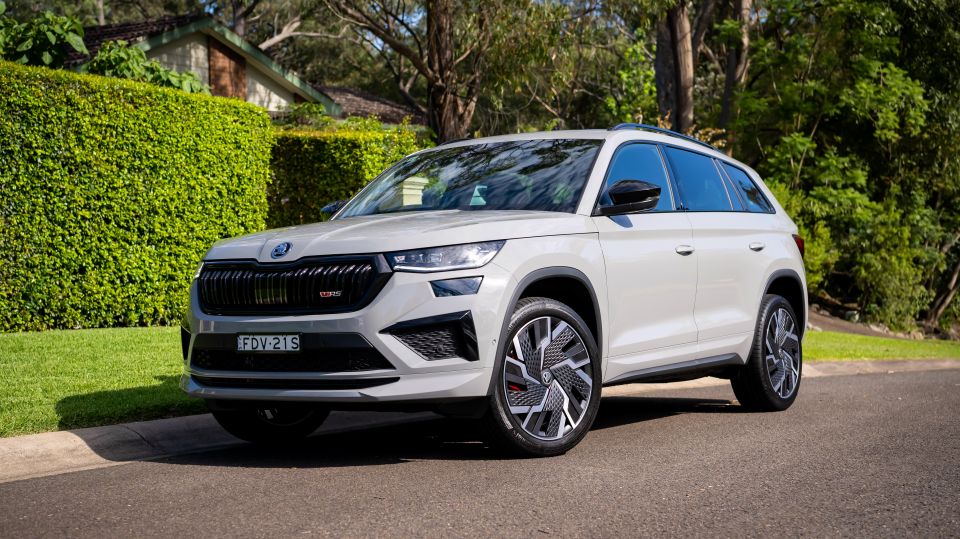
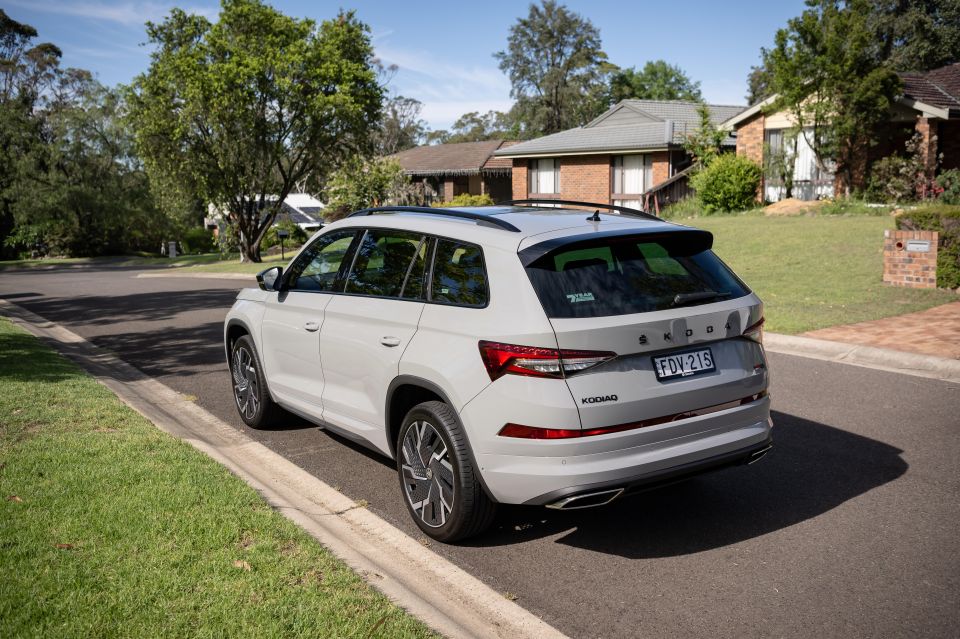

Quickly see how this car stacks up against its competition. Select any benchmark to see more details.
CarExpert helps new car buyers save thousands with expert reviews, honest advice, and transparent pricing – no dealer pressure and no sales games.
Take one part Skoda Octavia RS, and combine it with one part seven-seat SUV, and what do you get? This – the excellent Skoda Kodiaq RS.
I may have already given the verdict away, there. This is a terrific three-row family SUV, which has just seen its standard spec list tweaked as the brand adds back in some safety spec items that were removed as part of the semiconductor supply crisis.
All grades of Kodiaq have just been re-gifted blind-spot monitoring and rear cross-traffic alert with braking, plus there’s a few extra goodies which I’ll detail in this review.
It’s Skoda’s flagship model in Australia, so it’s no surprise the Kodiaq RS is the most expensive offering here – from $76,890 drive-away.

Yes, it’s $1900 more expensive now than last year’s model, but it missed out on the safety stuff mentioned above, plus the RS now gets a Canton sound system as standard, as well as auto-dimming side mirrors and power child locks.
So, if you’re considering spending this kind of money on a seven-seater for your family, what other options do you have? Um… You’ve got heaps of choice. For between $75,000-$80,000, you could get into a Hyundai Palisade, Ford Everest, Jeep Grand Cherokee, Kia Sorento, Mazda CX-90, or a Nissan Pathfinder – just to name a few.
It’s more likely that you’ll be cross-shopping this against the VW Tiguan Allspace; though, and that model offers heaps to like for less cash (162TSI R-Line starts from $63,090). But as with the Skoda, it’s nearing the end of its life-cycle, and will soon be replaced by a new model known as Tayron.
Or you might just want to wait for the new-gen Kodiaq, which is expected to come with an RS grade with 200kW!
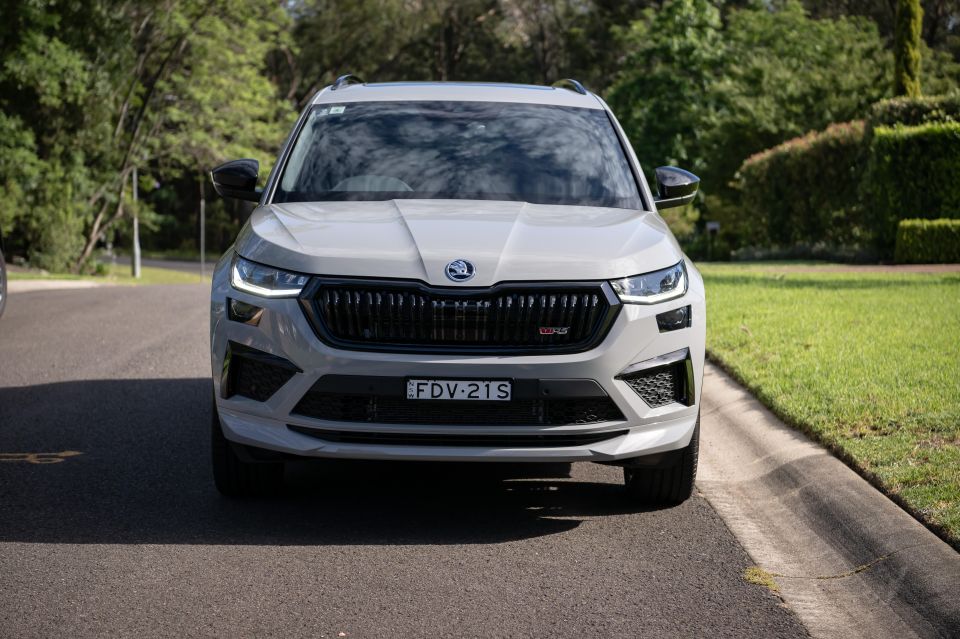
2024 Skoda Kodiaq pricing:
The Skoda Kodiaq RS cabin has some serious wow-factor.
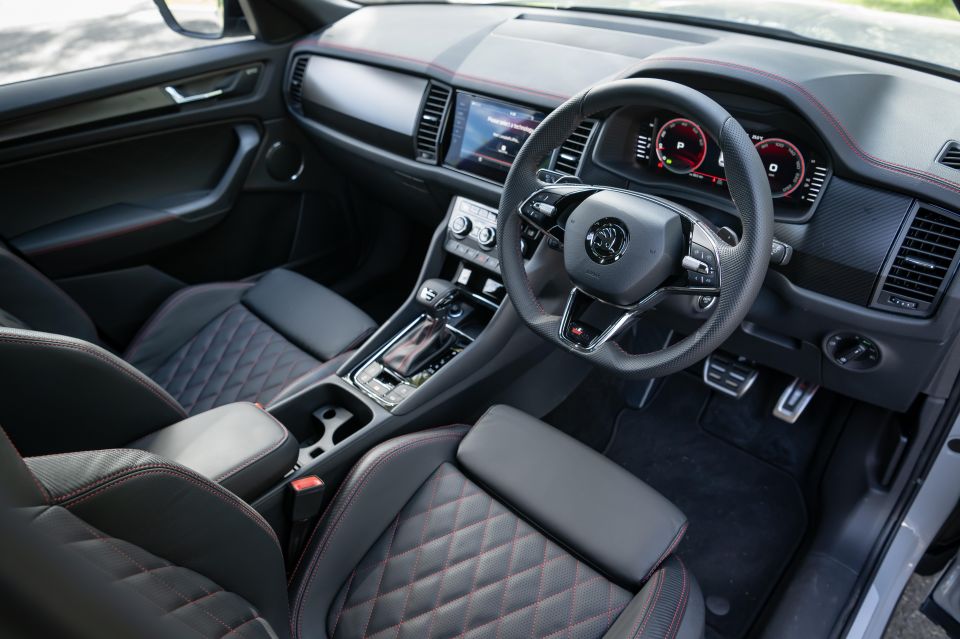
It gets quilted leather seat trim, carbon-look accents and beautiful stitching highlights, as well as ambient lighting. While it doesn’t have as much wow-factor in terms of screen sizes as you might find in some newer rivals, it still has a pretty functional and attractive cabin.
On that screen front, there’s a standard 9.2-inch unit in all models, which some other manufacturers in the market have increased to a massive 15-inches. Look, apparently size isn’t everything, but the media display here is, erm, adequate rather than memorable. There are no physical buttons, knobs or dials for more driver-friendly interactions, but the buttons on the steering wheel thankfully aren’t the haptic type, so it’s simple enough to adjust most elements on the move.
Wireless Apple CarPlay and Android Auto are a nice inclusion, plus you get wireless charging. Keep in mind; though, there are only two USB-C ports in this car. Second and third-row users will have to bring a 12-volt adaptor or their own battery bank to remain charged.
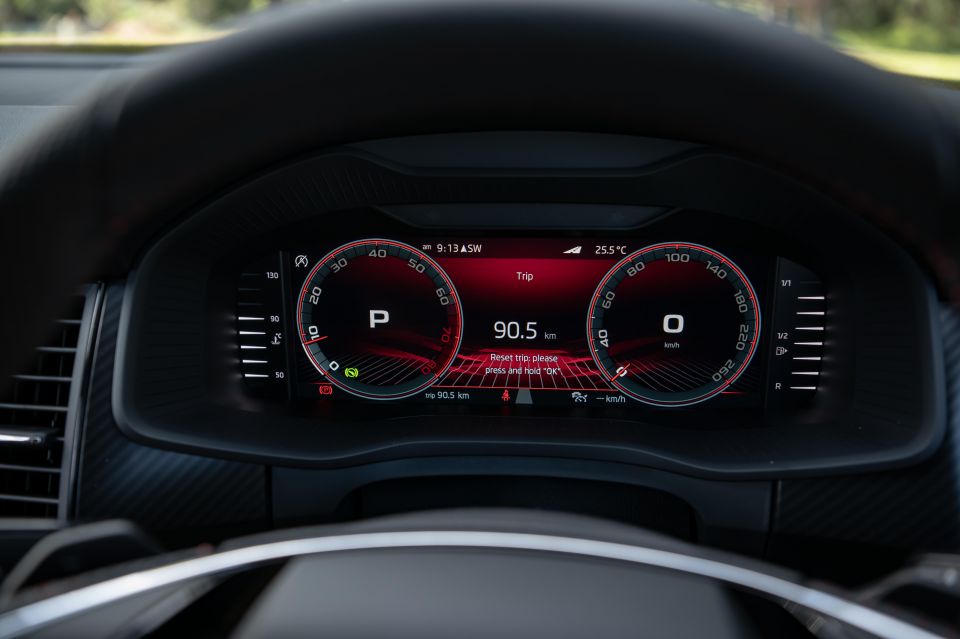
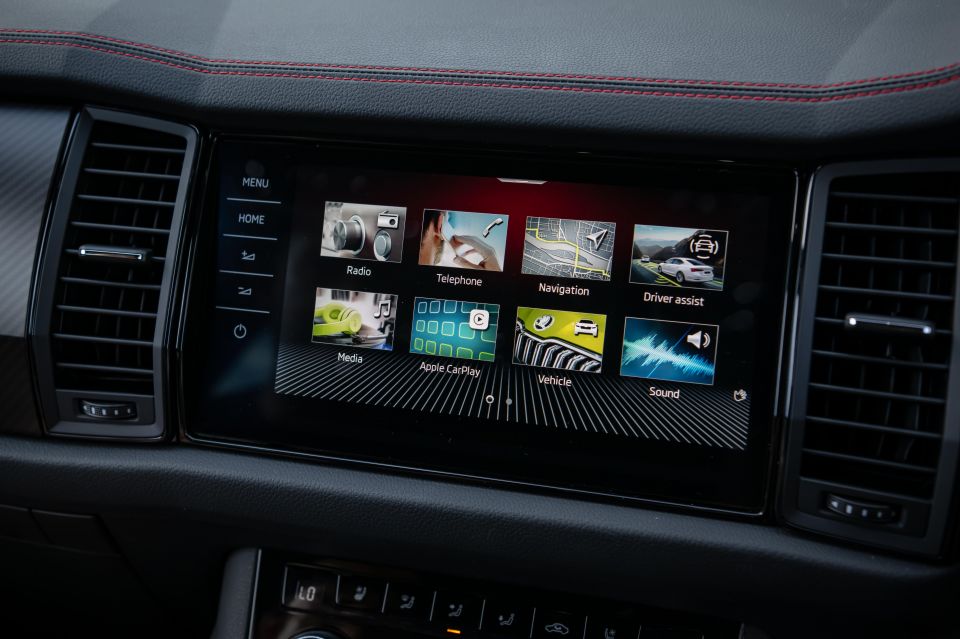
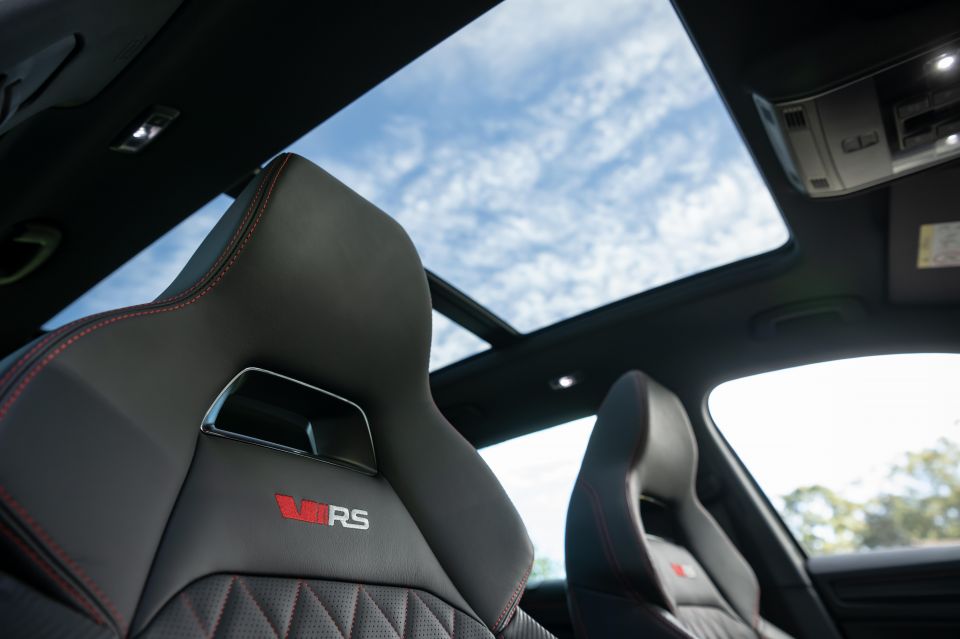
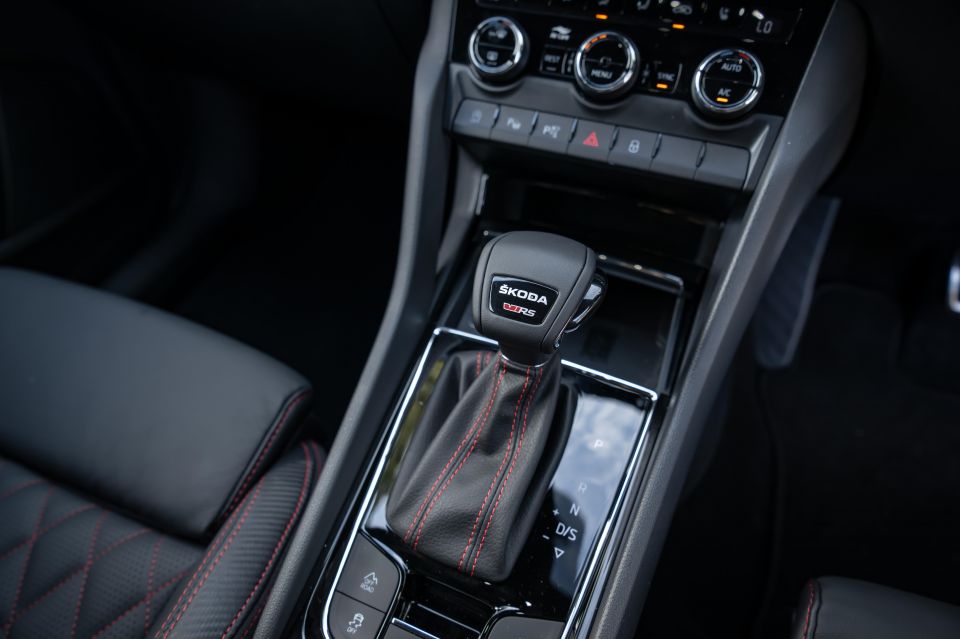
The media screen doubles as a display for the sat nav system, and there are also off-road displays for anyone who dares take their RS to the bush. The driver info screen offers a number of different displays to choose from, too.
Storage up front includes a wireless charger as mentioned, but the cupholder situation isn’t ideal. The front ones are very small, and a bit awkwardly positioned, too.
However, the sporty seats and good view out make for a very pleasant experience for the driver. Just keep in mind that, being an SUV, the ‘command’ driving position has been prioritised, meaning you can’t really sling your seat down low.
Now, at 182cm/6’0 I have enough room up front, and slotting in behind my driver’s position I have just enough space to be comfortable with the sliding second-row seat in its rearmost position. If I were to need to adjust it for anyone in the very back row, it’d be an uncomfortable squeeze.
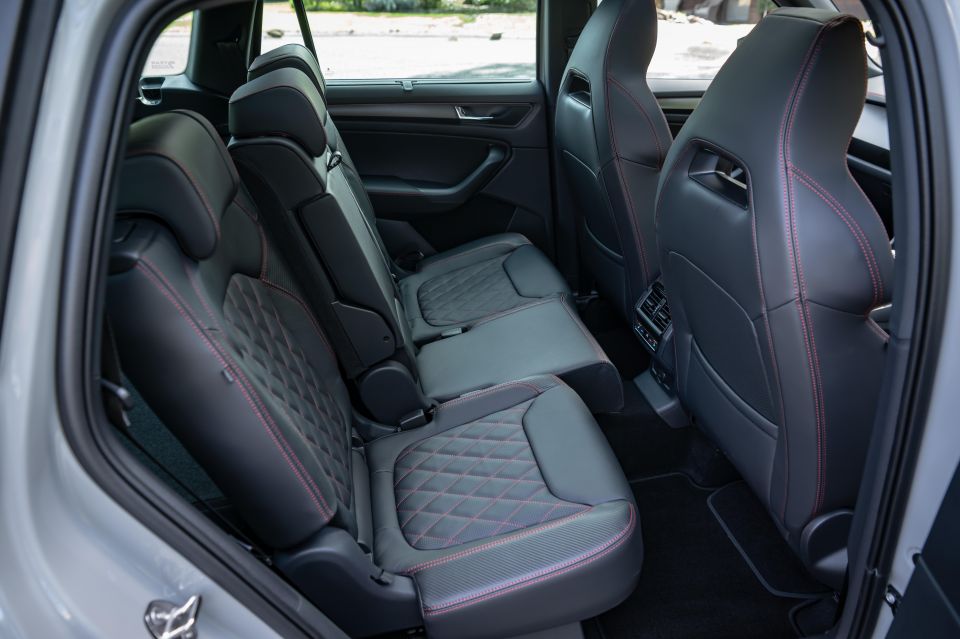
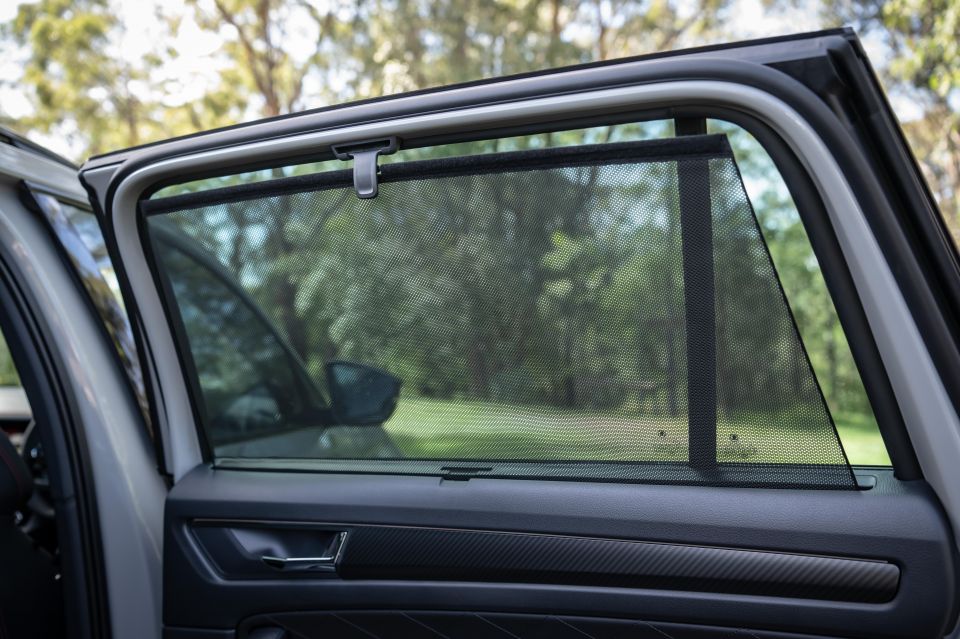
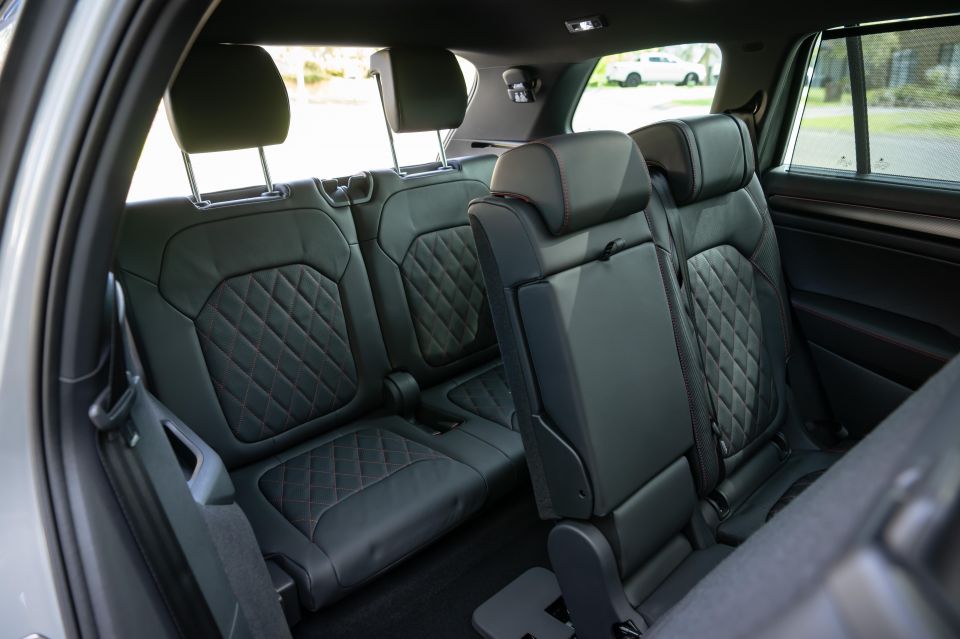
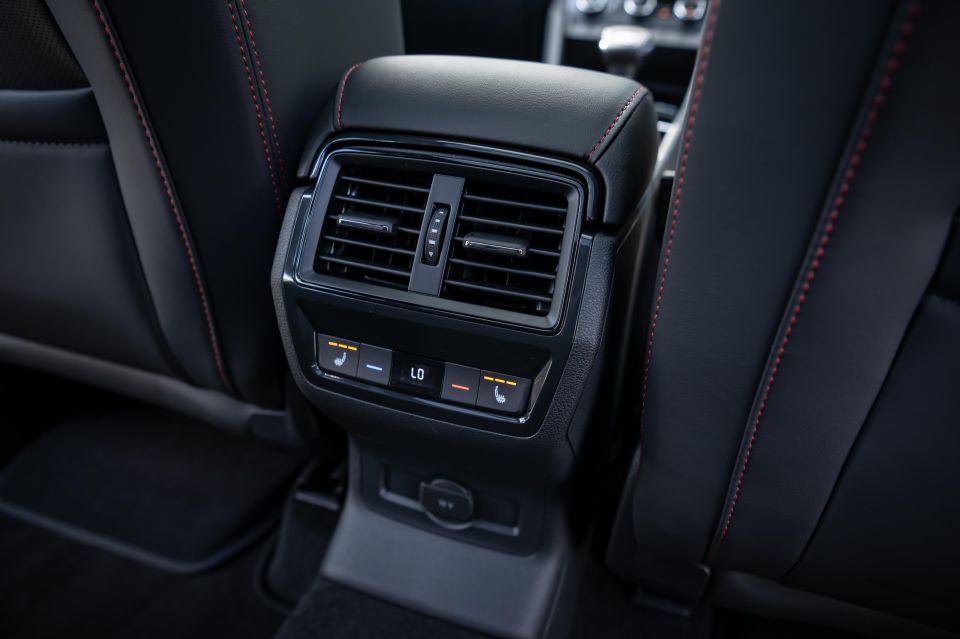
Parents can rest assured that the three top-tether points and two outboard ISOFIX mounts in the second row allow enough space for the little ones. You can fit three child-seats across the second-row if you need to.
There are some nice elements to the second row, like the integrated sunblinds, big door pockets and map pockets on the seatbacks, directional air vents, and even flip-down sections on the headrests that act like pillows.
However, if you’re thinking about using the third-row often, keep in mind that the second-row 60:40 split layout has the larger portion on the kerb/passenger side of the car. I’d want anyone who’s clambering into the back row to be doing so from the kerb side, and to be doing it over the skinnier section which is easier to fold and slide. Not so, here.
But further limiting the usability of this seven-seater is the fact there are no child seat options in the back row – which you do get in rivals such as the Mazda CX-90, Hyundai Palisade and Kia Sorento.
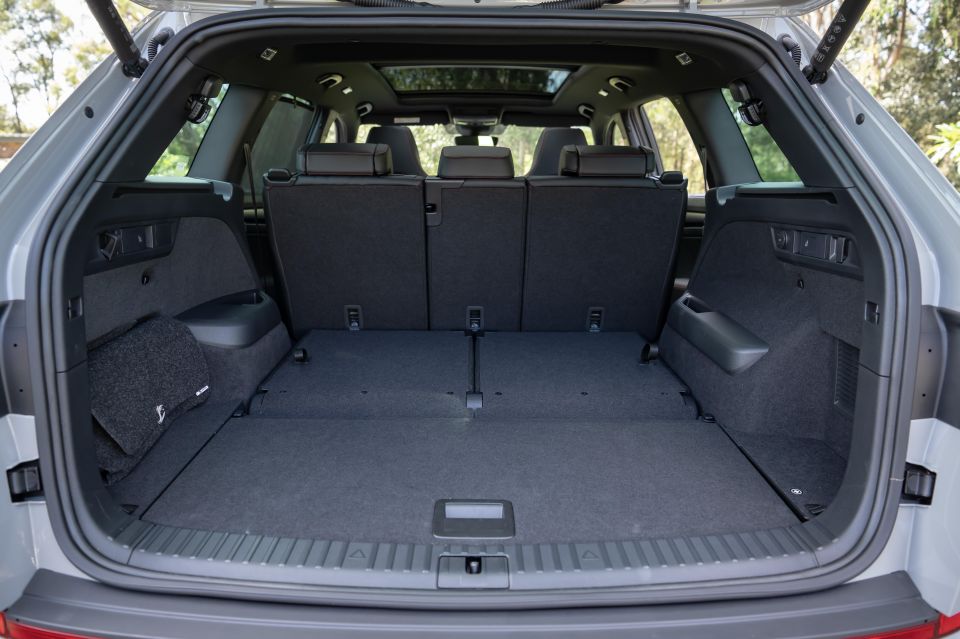
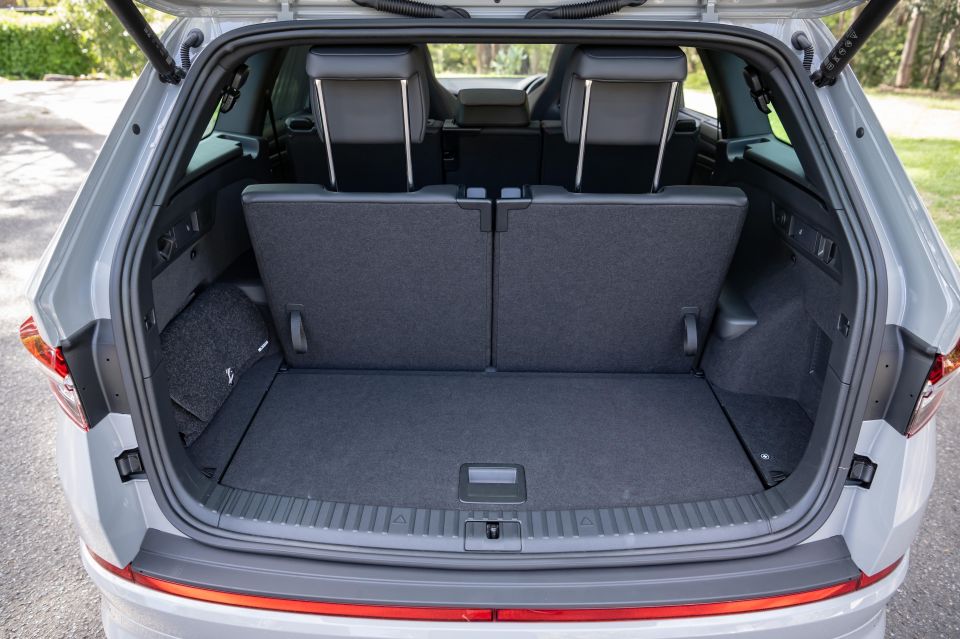
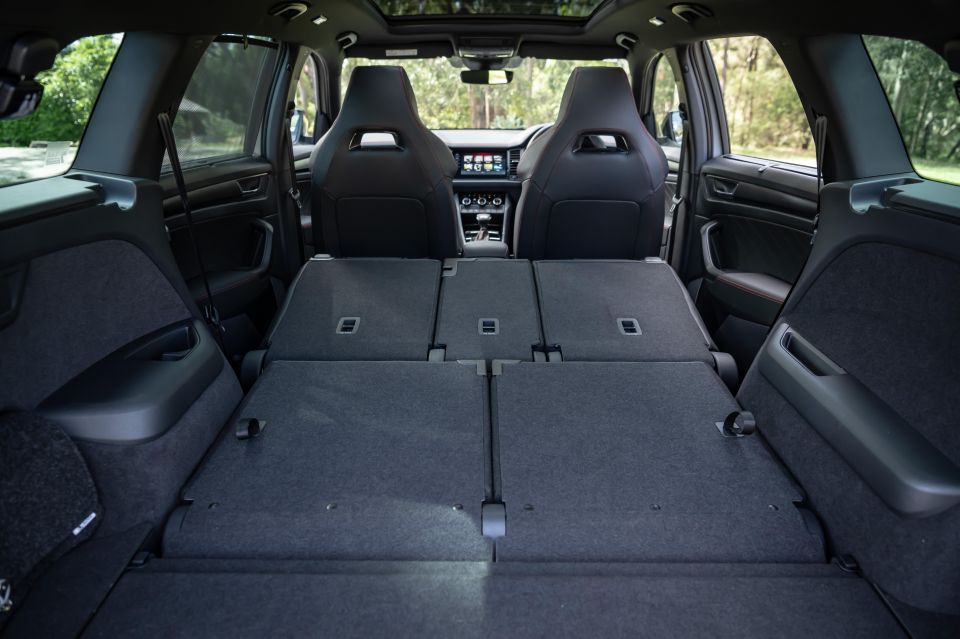
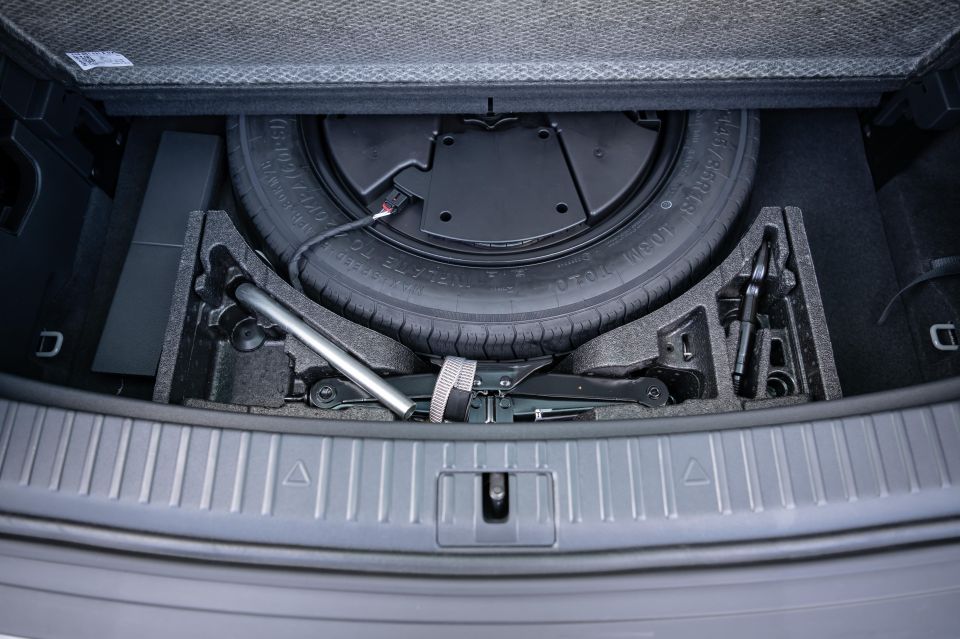
Don’t go expecting Palisade or Carnival levels of it in the back-row, because it’s better considered a five-seater with a bonus row. I say that because there are no third-row air vents, you still miss out on USB charging (there is a 12-volt outlet), and anyone taller than about 165cm or 5’5” will struggle to stay comfortable in there.
Let’s talk about boot space. With all seven seats up, there’s 270 litres (VDA) of luggage capacity, but if you run it as a five-seater there’s 630L (VDA) to play with when the seats are slid back and 765L if they’re in the forward position.
There are a few nice added extras in the boot area, too, including tie down points, netting to keep things secure, a picnic rug, and under the boot floor there’s a space-saver spare wheel and a space to keep your cargo blind if you’re running it as a three-row SUV. Neat.
The big news when the facelifted Kodiaq RS launched was that it switched from diesel to petrol. But boy, hasn’t that become a theme in the past 12 months as manufacturers move to ‘greenify’ their line-ups with less toxic ICE options.
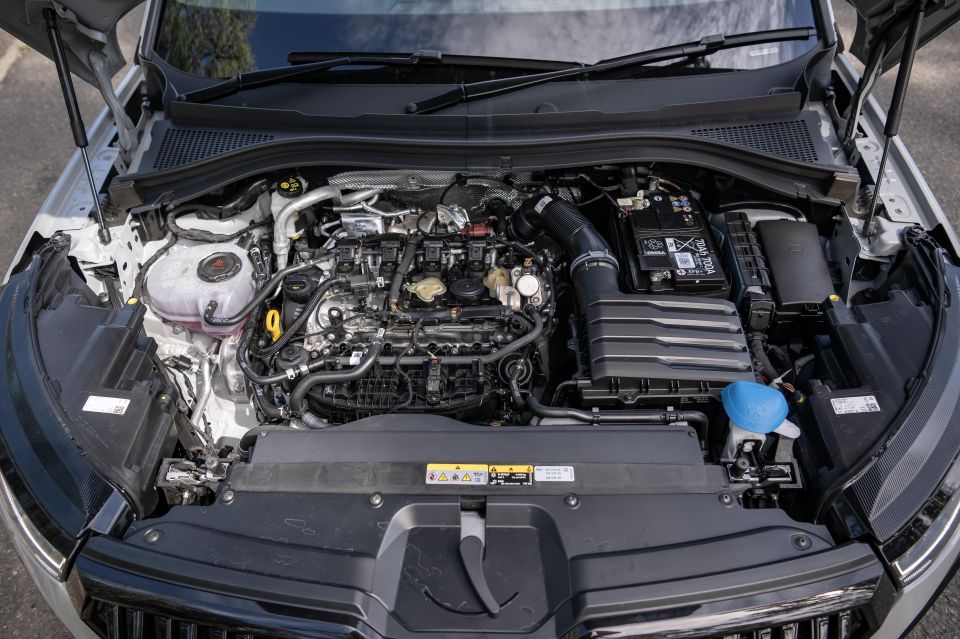
As a result, the Kodiaq RS adopted the excellent EA888 2.0-litre turbo-petrol four-cylinder engine that is also found under the bonnet of the Octavia RS.
It has the same state of tune, with 180kW of power and 370Nm of torque, and that means this sporty SUV will do 0-100km/h in 6.6 seconds (which is 0.1 sec faster than the RS wagon).
The reason it’s quicker is because, while heavier, it has all-wheel drive, where the Octy is FWD. There’s a seven-speed dual-clutch automatic transmission with paddle shifters.
Fuel economy is rated at 7.5 litres per 100km on the combined cycle, and you’ll need to fill it up with 95 RON premium unleaded. Don’t expect to drive from Sydney to Cairns on a single tank, though – it has a 58-litre fuel tank capacity.
In my real-world testing across a week of mixed driving, I saw a return of 9.1 litres per 100km.
The thing I like most about the way the Kodiaq RS drives is that it is adaptable to different scenarios, and you really notice the difference when you muck around with the drive modes.
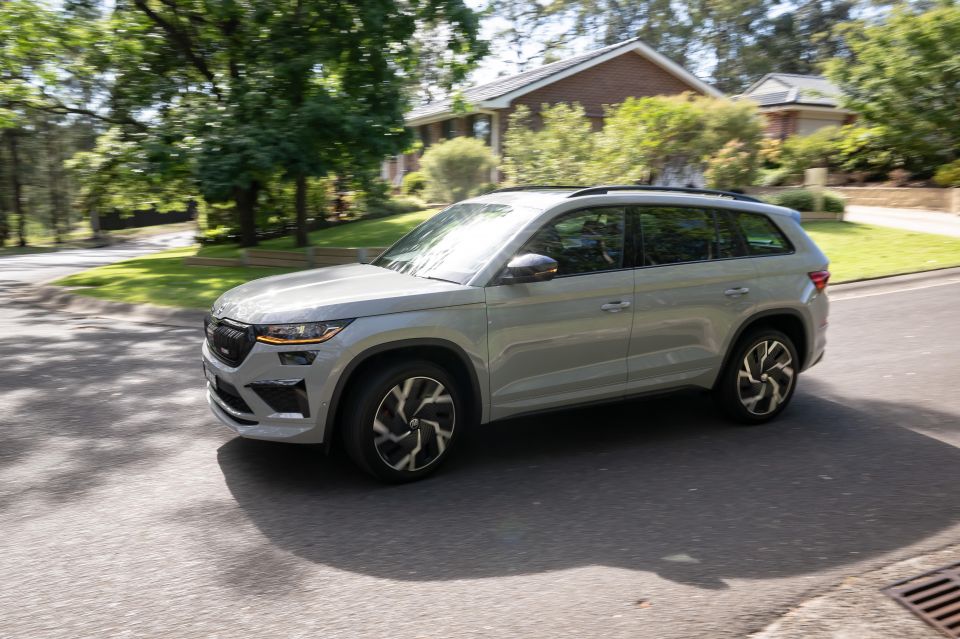
For instance, in the most comfort-focused setting, it’s the consummate family hauler; with the adaptive dampers offering a pillowy ride (albeit with a bit of jostle over sharp edges) and all the controls feel more relaxed in terms of operation – the steering, throttle and gear shifts are tame.
But then there’s Sport mode, which makes this more like a high-riding hot-hatch. While you mightn’t indulge in that when you’ve got the kids in the back, if you find a quiet road or you’re on your way home after work, you can have a bit of fun in this car.
In that mode you’ll be able to eke out all 180kW and 370Nm, and there’s a bit of a soundtrack to it when you do that. Yep, it has some augmented noise pumped through the speakers, and while that won’t be to all tastes it also has the occasional DSG flatulence.
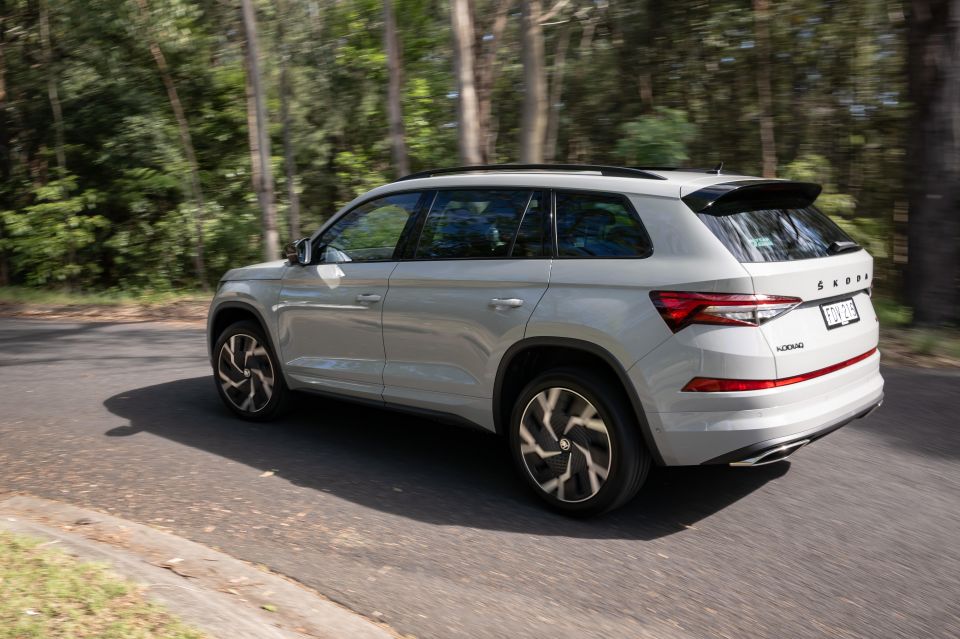
The transmission shifts are more decisive in this mode, and it really does hook up well when you plant your foot.
This setting makes for a more assertive ride characteristic, and there’s a really direct feel to the steering, especially when you’re linking up corners on a twisty road. Those Continental ContiSportContact tyres are nicely grippy, too.
There’s an Individual mode too, so you can customise the settings for the dynamic chassis control dampers, the cruise control, the steering, the artificial sound generator, engine, shifts, and more.
I had it set up so that it was in the Normal ride setting, but with Sport powertrain settings and Normal steering, while also turning off the noise actuator. I love that you can adjust it to your tastes.

What it all means is that this car comes across as a real smartypants. It can do whatever you want or need it to do.
It does still suffer from a few gripes, though. It’s a bit loud in the cabin, especially over coarse-chip surfaces, and I still reckon the diesel version that came before this had a more aggressive character because it was gruffer and grumblier.
But if refinement and a drive experience that can adapt to different requirements is what you’re looking for, then you’re going to be happy with the Kodiaq RS ‘TSI’.
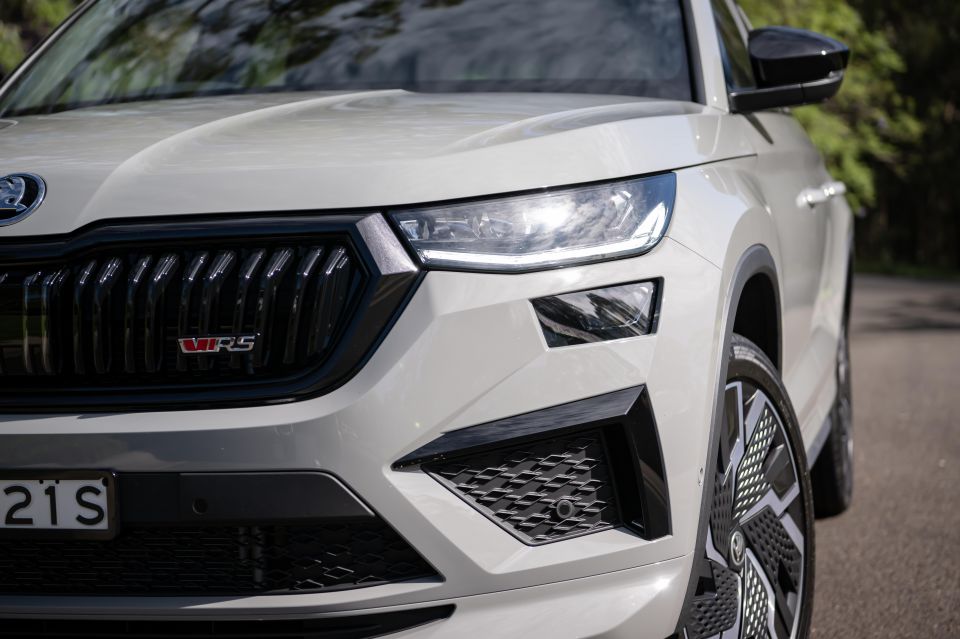

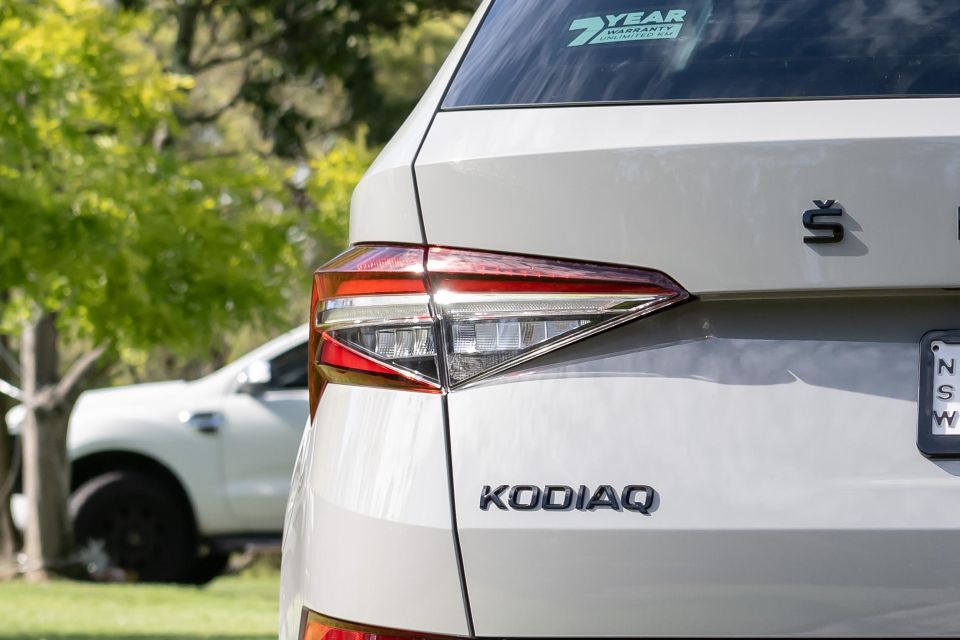

Kodiaq Style highlights:
Kodiaq Sportline adds:
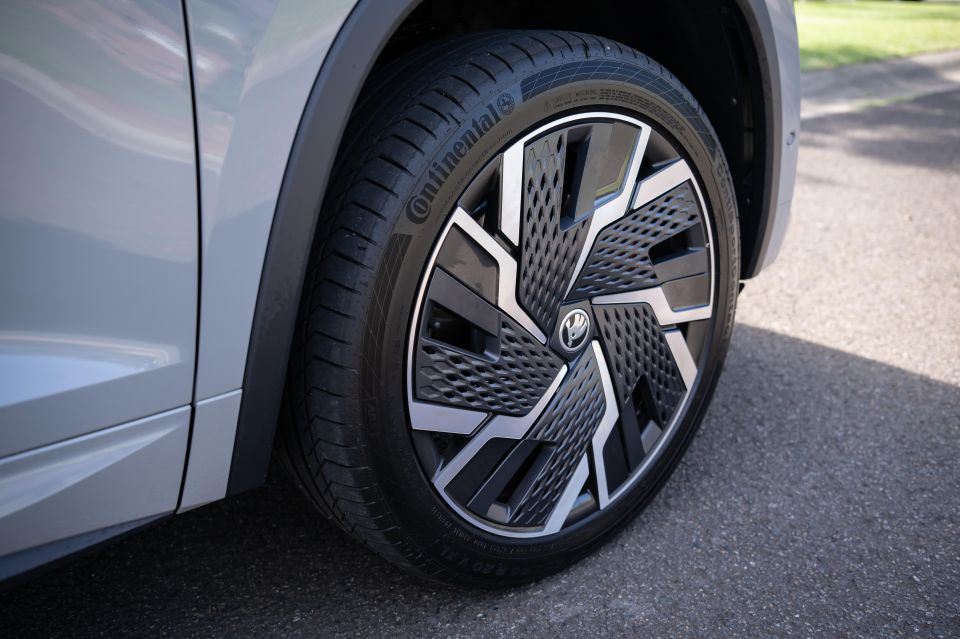

Kodiaq RS brings:
The Kodiaq RS achieved the maximum five-star ANCAP safety rating back in 2017, and because these things have expiry dates nowadays, the rating doesn’t apply from January 1, 2024.

CarExpert helps new car buyers save thousands with expert reviews, honest advice, and transparent pricing – no dealer pressure and no sales games.
It received an adult occupant protection score of 92 per cent, a child occupant protection score of 77 per cent, a pedestrian protection score of 62 per cent and a safety assist score of 54 per cent.
There’s good news for the Kodiaq line-up more generally, with the reintroduction of the standard safety items that were absent from the spec list recently due to component shortages.
As such, you’ve got blind-spot monitoring and assistance, and rear cross-traffic alert with auto-braking assistance fitted as standard in all Kodiaq models.
Standard safety equipment includes:
Kodiaq RS adds:
All versions of the Kodiaq come with nine airbags – dual front, front side, rear side, driver’s knee and full-length curtain airbags that cover the third-row occupants, according to Skoda.
Skoda now backs all of its models with a seven-year, unlimited-kilometre warranty plan, which is certainly going to appeal to those who plan to hang on to their car for a while.
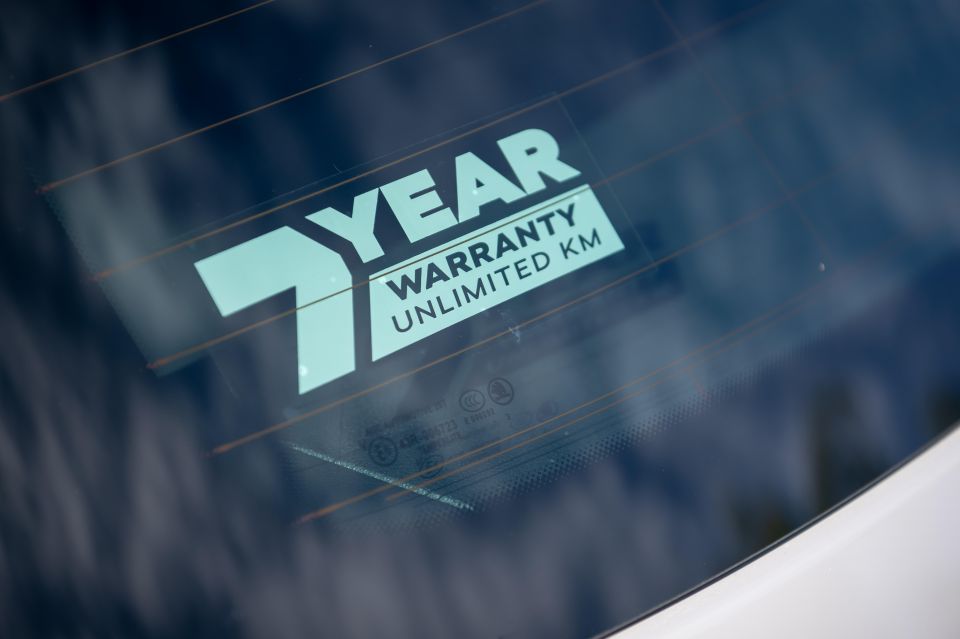
Also keep in mind the warranty cover is transferrable, so it will pass on to the new owner if you sell it on before that seven-year period is up.
The same can be said for a prepaid service pack. If you were to option the five-year/75,000km plan ($2600) or the seven-year/105,000km plan ($3400) you would not only save hundreds of dollars compared with paying as you go, but you’d also be able to add that to your listing when you sell the car, as it can be transferred.
There’s also a nice potential roadside assistance outcome, too – if you service your car with Skoda, you’ll be eligible for up to nine years of roadside assistance cover.
Despite the fact there are dozens of three-row family SUVs out there, there is no other seven-seater quite like the Skoda Kodiaq RS.
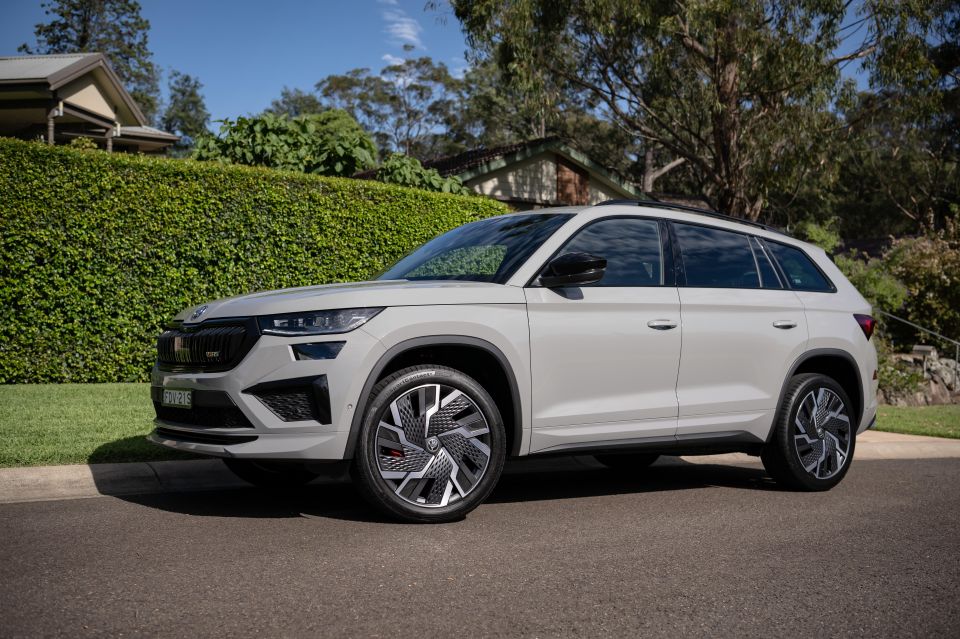
It is a fun, fast and family-friendly SUV, and while the new model promises to push the game forward in a number of ways, the current version still deserves your attention.
So get one while you can if this is the kind of car that lights your fire!
Click the images for the full gallery
BUY: Skoda Kodiaq MORE: Everything Skoda Kodiaq
CarExpert helps new car buyers save thousands with expert reviews, honest advice, and transparent pricing – no dealer pressure and no sales games.
Matt has more than a decade of experience in automotive journalism, and loves exploring the pros and cons of new cars, delving into deep-dive industry stories, and going for a drive just for the fun of it.


James Wong
5 Days Ago


Matt Campbell
4 Days Ago
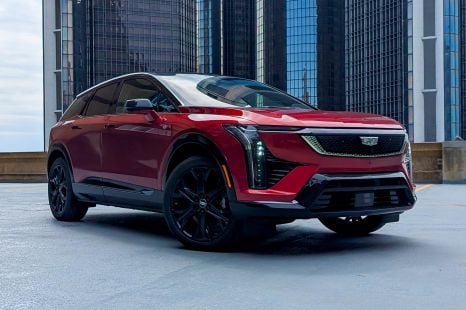

William Stopford
2 Days Ago
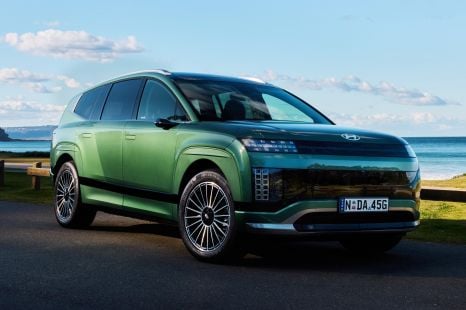

Josh Nevett
1 Day Ago
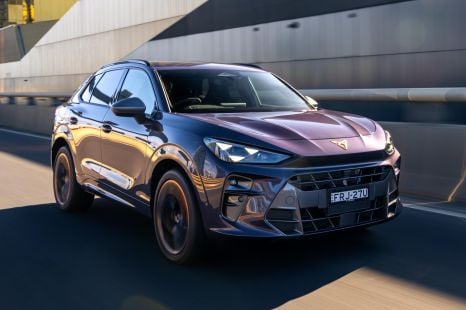

James Wong
1 Day Ago


Max Davies
20 Hours Ago